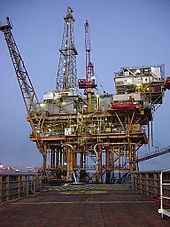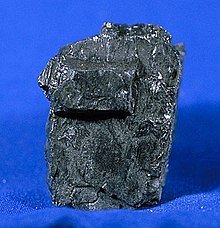Man And Machine, Part 2
Man and Machine, Part 2
The content related to this post is a summary of the information contained in Section 4.8 of the textbook, Chemistry; The central science: A broad perspective

Man and Machine
In my previous post, I introduced the topic regarding Man against machines. In that post, I elaborated on the single similarity between these two entities, which was the need for an initiating factor. In this post, I will be elaborating on the latter part of the topic previously introduced, which is the initiating factor for that of machines, which is fuels. Fuels may have a variety of meanings in the different aspects of industry as well as chemistry, but for the elaboration of this post, fuels are related to a fuel value, which is dependent upon the elemental compositions of a compound. The fuel value is often referred to as the energy released when a single gram of a specific material is combusted with air. The table below is a comparative description of the fuel values for different types of common fuels,

Table of Fuel Values (Due to Combustion)
When the complete combustion of fuels occur, carbon is often converted to carbon dioxide and hydrogen is converted to water. It is important to note that both these compounds have negative enthalpies of formation which are of extremely large magnitude. Due to this, the fuel value is noted to be higher when the percentage of carbon and hydrogen in a fuel is much greater. As can be observed in the above table, coal can be noted to have a higher fuel value than that of wood due to its high carbon composition. It can also be stated that between carbon and hydrogen, hydrogen is the more correlated term to that of fuel value, as can be observed from the above table as hydrogen has a higher fuel value than that of charcoal.
In the engineering of fuel, coal, natural gas as well as petroleum, which are often the main sources of energy in most countries, are referred to as fossil fuels. Fossil fuels are a product that is formed over the decomposition of animal as well as plant matter over a time period of millions of years. The unfortunate factor when related to fossil fuels is the amount of pollution it causes as well as the rate of depletion of these resources.
- Natural gas, which is a renewable resource, chemically consists of mainly gaseous hydrocarbons, which specifically contains methane, with a cocktail of smaller amounts of ethane, propane as well as butane.
- Petroleum is an extremely complex liquid that consists of hundreds of different compounds. Similarly to that of natural gas, petroleum consist mainly of hydrocarbons as well as compounds that consist of a carbon and hydrogen skeleton, along with the linkage of sulphur, oxygen or nitrogen atoms.
- From the pre mentioned list of fossil fuels, the following branch is probably the most important and widely used form of fossil fuel, which is coal. Coal is a solid structure compound that consist of mainly hydrocarbons of extremely high molecular weights as well as an amalgamation of compounds consisting of sulphur, oxygen or nitrogen once more. In the natural world, coal is the most abundantly found fossil-fuel and constitutes almost 90% of the world’s fossil fuel reserves. Although coal provides us with the energy to perform almost all working tasks that involve electricity, there are a few problems as aforementioned. Firstly, coal causes a lot of air pollution, as coal is mainly constituted of sulphur dioxide, which is a very troublesome air pollutant. Secondly, due to the physical form of coal being a solid, recovery from it’s underground deposits are often extremely dangerous as well as relatively expensive. Furthermore, coal deposits often are far away from areas that have high energy requirements, therefore transportation costs are often incurred as coal is redistributed to higher energy dependent areas.
An important feature to note when referring to the utilisation of coal reserves, is by referring to the ability to use these reserves to produce a mixture of hydrocarbons called syngas, which is known as synthetic gas. This gas is produced by a process known as coal gasification, whereby the call is usually pulverized and treated with that of superheated steam. Compound such as sulphur containing compounds, carbon dioxide as well as water can be removed from the products of this process, thus the remaining mixture of gases contain mostly methane, hydrogen as well as carbon monoxide, which typically have high fuel values:

Chemical Reaction
Syngas is an extremely favourable gas to be used often in industry due to it often desirable properties. Due to the product being gaseous, syngas can be easily transported through pipelines on a plant. Also, due to the gasification process, most of the sulphur component in the coal is removed, and as a result, the combustion of syngas produces less air pollution than that of the combustion of coal. Due to the above mentioned reasons, research continuous and evolves in the fields of chemistry and engineering, as the economical conversion as mentioned of coal and petroleum into fuels that are ‘cleaner’ (such as syngas) are more favorable than that of ‘unclean’ gas.
It is important to note that fossil fuels are non-renewable resources and due too this reason, scientists and engineers were required to come up with alternate sources of energy as non-renewable resources depletion is occurring at a rapid rate.
An initial solution to this problem was the investigation into nuclear energy. Nuclear energy is referred to as the amount of energy that is released in either the fusion of the nuclei of atoms or the splitting of the nuclei of atoms. In principle, nuclear energy is free of any polluting emissions, which is often a huge problem when generating energy from fossil fuels, thus the pollution factor is eradicated. The only unfortunate criteria of nuclear energy is the production off radioactive waste, which is often not socially accepted as well as fraught with a sense of controversy.
Another reviewed form of alternate energy, which is possibly the most utilized, is referred to as solar energy. Solar energy is the utilisation of sunlight to produce electrical energy. It is estimated that on a clear, sunny day, approximately 1 kilojoule of solar energy reaches the surface of the Earth per second. If we were able to harness this form of energy, a Goliath amount of electrical energy can be produced. The only difficulty in this process is related to the fact that the energy is diluted, as it is distributed over a wide area and also varies with the weather conditions at the time as well as the time of the day. Other forms of energy include that of wind energy, geothermal energy, hydroelectric energy as well as biomass energy, which are obtained via windmills, heat stored in the mass of the planet, flowing rivers as well as biological waste matter respectively. By the introduction of more Earth friendly renewable resources, we can help our land return to that of its original glory days, when it was not blighted by the stench of pollution as well as having the ability to boast a colorful vegetation.

A Natural Wetland situated in New Zealand
This brings us to the end of my part 2, and series, of Man and Machines. I hope these posts have being enjoyable as well as informative. Although Man and Machine may seem to be worlds apart, there are similarities between them. Let us hope that in the near future, we reach a state of homeostasis among the living and the non-living.
Images are linked to their sources in their description
The End
References:
[1]https://en.wikipedia.org/wiki/Solar_energy
[2]https://www.uwosh.edu/faculty_staff/gutow/Chem_106_F07/Fuel%20values.pdf
[3]https://www.fpl.fs.fed.us/documnts/techline/fuel-value-calculator.pdf
[4]Chemistry,The central science: A broad perspective
[5]https://www.sciencedaily.com/terms/fossil_fuel.htm
[6]https://www.studentenergy.org/topics/fossil-fuels




Taking photos from Chemistry, The central science: A broad perspective and using them commercially is considered copy-right infringement.
The text of this post and your post from last week closely resembles the foods and fuels section of Chemistry, The central science: A broad perspective. Please be explicit in stating the connection between your post and the before mentioned book. Referencing it at the end is insufficient.
I am sorry for doing so, I referenced them under the reference of the picture but i see that viewers are unable to identify it, I will make sure it does not happen again. Thank you :)
If you want it resteemed to my 33,200+ followers, go here: @a-0-0